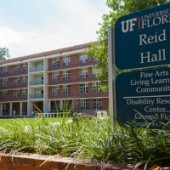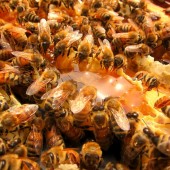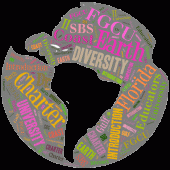
The purpose of this paper is to describe the application of a sustainable learning framework through a community-based project in the Southern California region. The Sage Project is a partnership between San Diego State University (SDSU) and a local government in San Diego, California. The framework promoted educational innovation by allowing students to utilize existing courses and focus on partner-identified real-world projects to help advance the needs of partnering cities. Recognizing the need for air quality research in the partner cities and after consulting with both local governments regarding their environmental needs, SDSU graduate students were able to conduct research and communicate their results concerning air quality in a manner that benefits local community stakeholders, as well as, the university and students involved. Through the assembly and quantification of air pollution data, graduate students provided a brief snapshot of air quality trends in partnering cities to establish a foundation of air quality results to be used toward generating mitigation strategies to reduce particulate matter air pollution. By providing never before conducted air quality research in both communities through a sustainable educational model, both community partners and students benefited through enhanced research and community engagement opportunities while community partners obtained valuable and informative research, ideas, and solutions concerning their community needs. This paper provides a demonstration of the ability for project-based curricula facilitated through a community and university partnership to be replicable in higher education coursework.
Continue Reading
This paper presents best-practices for client-oriented project based learning (PBL) based on building audits used to impart practical sustainable engineering skills. Insights were gained over years of natural reflective practice during which students conducted off-campus building audits for the New Jersey Department of Military and Veterans Affairs. Few studies have explored the use of off-campus building audits with real clients in project based learning courses. A survey of students from recent semesters, plus tangible outcomes, are used to evaluate success. The building audits are valued by students and clients. Best-practices contributing to the success of the building audit course are described which can be used by any PBL practitioner. Critical best-practices pertain to training, deliverables, a report template, a submit-review-resubmit cycle, and regular interaction between undergraduate students, graduate student, faculty, and client staff. In particular, repeated cycles of submitting reports, getting comments, and resubmitting appear to be vital to both student learning and client satisfaction. On average, student teams submitted their major report 3.75 times and received comments 3.9 times.
Continue ReadingUndergraduate education majors were enrolled in a project based learning methods course in spring 2012. As a culmination, they prepared five year plans to promote environmental stewardship in primary public schools in Bahrain. Since all students plan to eventually teach science in the primary schools, it is hoped they will be able to implement at least some of their plan and foster environmentally friendly habits that last for the lifetime of their students.
Continue Reading
Project-based community service learning increases the effectiveness of sustainability education and demonstrates the importance of providing children with opportunities to be healthy, happy and eco-literate global citizens. At Wright State University, as students learned environmental and socio-economic content, they became informed citizens who were empowered as local change agents. Insights from these case studies illustrate how we can engage college students to foster skills as informed decision-makers and engaged future teachers. Examples of curricular models are proposed for educators and students to effectively address environmental dilemmas by integrating scientific content knowledge with civic engagement to best prepare sustainably literate citizens.
Continue Reading
In order to state their commitment to sustainability, colleges and universities across the United States are signing environmental charters which emphasize the importance of incorporating environmental issues into education, research, operations, and outreach. As a signatory of several charters, the University of Florida (UF) has taken a particular interest in greening their student housing and has made considerable progress in retrofitting a housing stock over 100 years old. However, despite the implementation of sustainable practices throughout their residence buildings the university has continued to identify areas needing further improvement. As participants in the U.S. Green Building Council’s (USGBC) Research to Practice (R2P2) program, which aims to engage the educational community in a variety of on-campus research, a team of UF students and faculty utilized the opportunity to investigate obstacles faced in enhancing student housing performance. This case study reports on the pedagogy used by this team to assess the efficacy of applicable sustainable strategies and the environmentally significant behaviors of residents within three residence halls. This pedagogy aimed to first, involve students in project-based learning (PBL); and second, to provide a service to the university by contributing to its efforts to green the campus. Findings of this study illustrated a number of methods for improving building performance. Additionally, as pedagogy, PBL was found in this study to set the stage for acquisition of Gestaltungskompetenz—the organizational, participatory, collaborative, interdisciplinary, and reflection competencies necessary for sustainable development. However, while these findings offer great promise for improving sustainable practices and education, more focused research is needed to explore the challenges and opportunities of their application. Therefore, this study is an invitation to further our exploratory research and continue the discovery of applications for the PBL model in sustainability education.
Continue Reading
The Ashland Apiary Project is a multi-pronged, multi-aged learning design that uses beekeeping as a thematic avenue for hands-on experiential learning and the cultivation of land stewardship. The project is a student-led, collaborative effort by Southern Oregon University to establish an on-campus apiary that serves as a model of place-based and community-based education for a wide audience of students in an elementary, secondary, and collegiate setting. Through the Ashland Apiary Project, the pedagogic approach of “apiary-based learning” is considered in the field of sustainability education.
Continue Reading
The current paper introduces and presents a preliminary pilot study of the Guided Research Applied Sustainability Project (GRASP) model for sustainability education. GRASP integrates curriculum, research, operations and engagement at the university level to create specialized projects that both engage students with real world issues and provide usable outputs for campus and/or community partners. Drawn from theory and practice in Education for Sustainable Development (ESD) as well as experiential education, the GRASP model includes five primary elements, which are the project topic (substantive issue being studied), groups (students working together), mentors (conduit between the instructional staff and enrolled students), assignment (pedagogical deliverable students submit for grade), and procedure (process of topic selection and project completion). GRASP was designed to enable implementation in both small and large courses at the undergraduate and/or graduate level and was tested in a large (200+ student) undergraduate Sustainability course. Projects included a campus sustainability audit and mixed methods analysis of documentary film campaigns. Survey data collected from students and mentors determined that the GRASP model is effective in providing students with a positive and engaging learning experience. Outcomes identified relate to attitudes and values as well as knowledge and skill attainment (e.g. teamwork, applied sustainability research). Suggestions include additional instruction on research methodology and greater clarification of project guidelines and mentor roles. The results of our pilot study reaffirm the potential impact of an experiential approach to sustainability education that incorporates multiple stakeholders from within the university campus and is scalable to large classes. GRASP is recommended as a model with which to meet these goals.
Continue Reading
This article describes a collaborative online project that focused on the Earth Charter, particularly on its principles related to diversity. The project was conducted in two online courses of three sections in two colleges at Florida Gulf Coast University (FGCU): the College of Arts and Sciences and the College of Education. One section of twenty-three students in a Composition II course and fifty-four students in two sections of an Introduction to Diversity for Educators course collaborated in mixed teams on a four-stage problem solving project that exposed the participants to a larger community of learners and reinforced shared responsibility for the present and future welfare of the human family and the global community.
Continue Reading